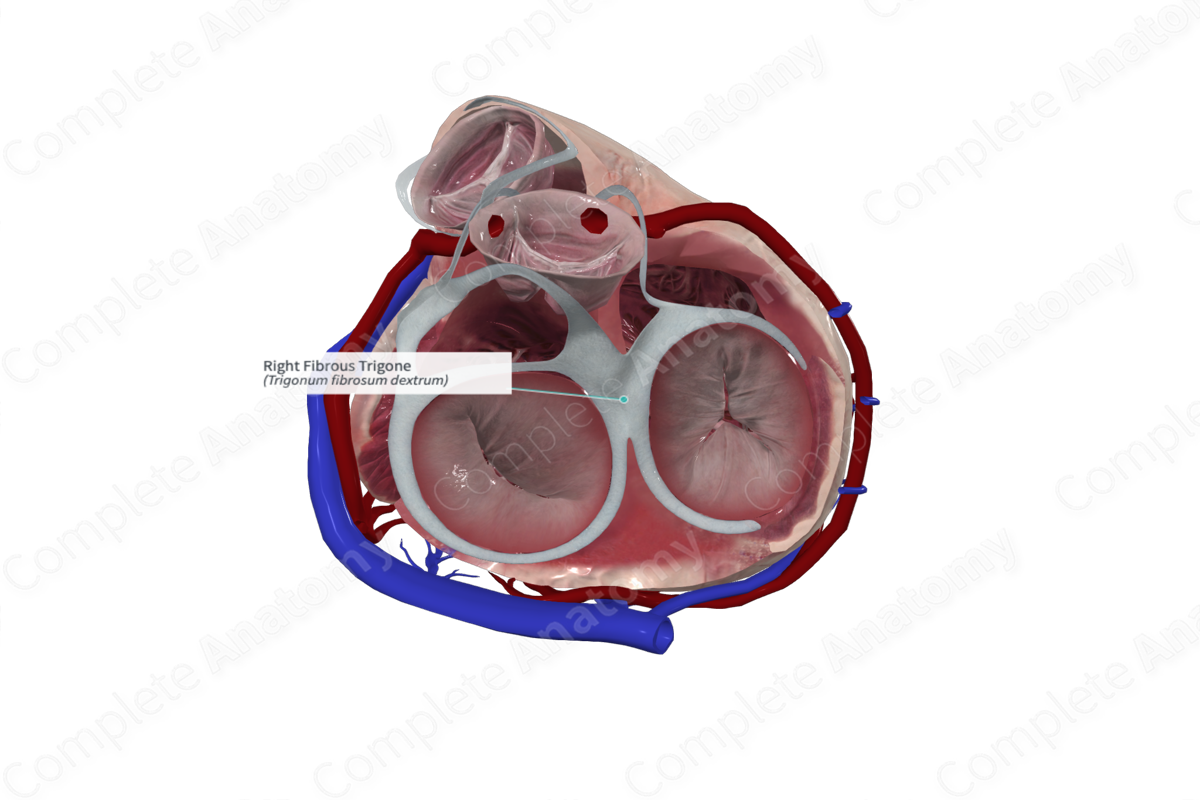
Morphology/Structure
The right and left fibrous trigones are the strongest portions of the fibrous skeleton and consist of dense connective tissue which surrounds the right atrioventricular orifice and forms part of the right atrioventricular valve.
Key Features/Anatomical Relations
The right fibrous trigone connects the atrioventricular fibrous rings to the aortic ring.
Function
The right fibrous trigone provides structural support to the atrioventricular and aortic valves and aids in the structural support of the membranous septum and serves as a direct attachment for the myocardium. It helps to separate the atria and ventricles and thus the electrical activities between the chambers by insulating the propagation of electrical impulses in a heartbeat.
Learn more about this topic from other Elsevier products
Bladder Trigone

The bladder trigone is a triangular area at the base of the bladder bounded by the internal urethral meatus and the two ureteric orifices.



